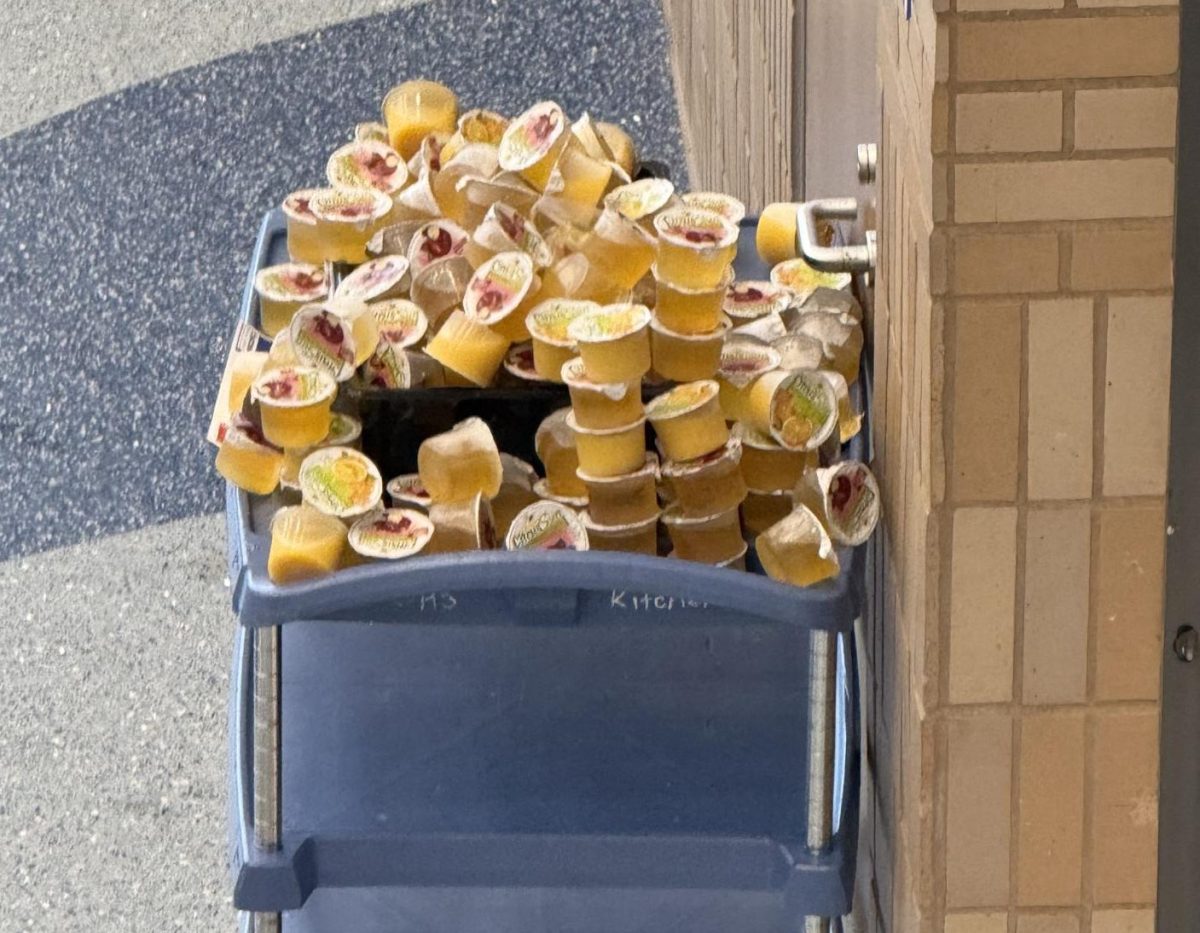Waste At OHS
Each morning at Owatonna Highschool, hundreds of students shuffle through the breakfast lines, grabbing the offered items: a hot item or breakfast bar, fruit, a grain, and a carton of milk or juice. But as breakfast ends, one thing remains. Unopened apple juice containers pile up on top of a bin abandoned. It’s a scene students have gotten used to, but it raises a big question: why are we wasting so much? Where does it go?
Kitchen Manager Dena Brech said, “ We know that there’s waste everywhere. I feel like we have a lot of garbage. We’ve started to incorporate real lunch trays this year and I think that’s going pretty well. We try the best we can with the resources we have to reduce waste.”
Under USDA guidelines for school meals, students are required to take certain items including fruit or juice even if they don’t want it. These rules are designed to ensure nutrition, but the result of that is the opposite: waste. That small decision repeated by hundreds of students adds up. If 100 students throw out four ounce juices daily, that’s two gallons of juice wasted everyday which is over 300 gallons of juice wasted per school year. This kind of waste isn’t just frustrating, it’s expensive and harmful to the environment.
Senior Grace Lu said, “ I don’t think that there is enough effort to reduce waste because the recycling bins just kind of sit there and there is no push to recycle things properly so like a lot of kids just throw random trash in there. I don’t think I’ve had a class where we even talked about how to manage waste, and I just feel like we don’t learn that topic so a lot of kids just don’t know too much and a lot of kids just don’t care.”
Owatonna isn’t alone in this problem. Schools across the country are dealing with the same issue, but some are finding solutions like Share tables. Some schools allow students to place unopened items on a designated “share table” where others can take them. This is USDA approved if done safely. Food Donation: Certain districts partner with local food shelves to donate unopened items at the end of each day. Smarter Choices: Schools can offer multiple fruit options, like whole apples, oranges, cut fruit, instead of just letting students pick what they’ll actually eat. Policy Changes: Students and staff can work with school administrators to change how meal items are given out, maybe not forcing juice when a student already took a fruit.
Senior Kelly Sackett said, “One way our school reduces waste is through the share bin at the end of the breakfast line there is a bin where kids can put unwanted breakfast items into, and then other kids can take whatever they would like out of the bin to enjoy, this prevents items from being tossed in the trash.”
Reducing waste isn’t just about saving juice, in particular it’s about building more of a mindful school culture. When we stop normalizing waste, we start creating a process that respects food, effort, and resources. Owatonna High School has the opportunity to lead by example. By starting the conversation, raising awareness and trying simple solutions, we can turn those morning juice piles into a thing of the past.


